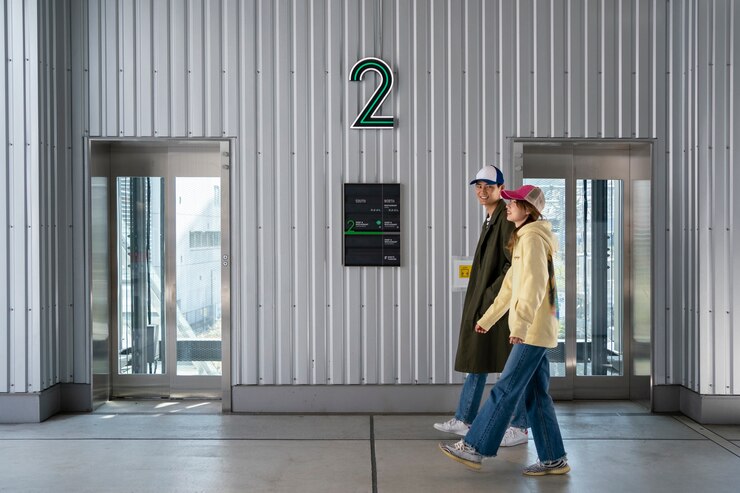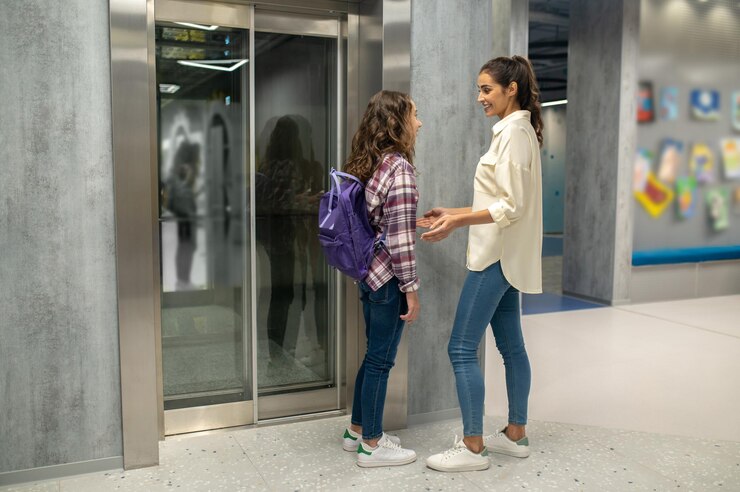
With lifts and elevators rising in modern buildings, people often need clarification with both terms. Though these words depict different things, they are not identical regarding pronunciation. Exploring these words’ origins, functions, and cultural implications reveals a glimpse of language diversity. Let us delve into the detailed idea of the difference between lift and elevator and explore the appropriation of their meanings by British and American English speakers to form the vocabulary of both cultures.
What is A Lift?
A lift is a platform designed for vertical movement within a building. Often enclosed in a cabin, this platform travels along a guided track or cables within a dedicated shaft. Passengers enter the lift and select their desired floor using a control panel. The lift then smoothly transports them to their destination, defying gravity and streamlining building navigation.
What is An Elevator?
An elevator functions identically to a lift. A platform moves vertically within a building to transport people or goods. It also has a cabin or platform suspended within a vertical shaft and uses controls for floor selection. Emergency brakes, overload sensors, and backup power sources are integral to elevator systems. The difference lies not in the functionality but in the terminology employed, which is influenced by regional linguistic preferences.
The Difference Between Lift And Elevator
The key distinction lies in regional usage. Here’s a breakdown of their preferred terms:
- Lift: This term is predominantly used in British English and other countries like Australia, New Zealand, and India.
- Elevator: This term is primarily used in American English and some parts of Canada.
The function of the small lift for home is the same as that of the commercial elevator. They carry an identical meaning, making them synonyms of one another, and you can freely opt for any term when using it for the same purpose without any room for confusion.

British vs. American Background Difference
The distinction in terminology is based on the history of creation. The first passenger elevator was implemented by American inventor Elisha Otis in 1853. He elaborated on the machine as an “elevator,” well-known in the United States. This term became popular in the U.S. and then spread to other countries influenced by the American culture. Meanwhile, a similar device was being designed in Britain during the same period. However, the term “lift” was adopted to describe this invention. This regional cleft has endured through the use of different terms, resulting in a different lift meaning for this structural element. This difference in terminology has persisted over time, creating a regional divide in how this essential building component is referred to.
Lift vs. Elevator: What Should You Know?
Structure
Both lifts and elevators share a similar fundamental structure. They utilize a platform, often called a cabin, suspended within a vertical shaft. This platform is guided by rails or cables, allowing smooth and controlled movement between floors.
Features
Modern domestic lifts and elevators have various features that enhance user experience and safety. These features include:
- Automatic Doors: These doors are automatic and open when one arrives on each floor. This prevents any accidental fall that can cause harm to the passenger.
- Control Panel: An intuitive interface allowing passengers to pick the floor that best suits their needs.
- Emergency Stop Button: The emergency button is a vital one that immediately halts the movements of a lift when passengers are at risk or crises happen.
- Overload Sensors: These sensors allow the lift or elevator to acquire the set weight capacity by not exceeding the capacity limit. The safety of passengers and equipment is guaranteed.
Safety Aspects
Security has always been the subject of vital importance for lifts and elevators. Both types of equipment undergo rigorous inspections and are subject to stringent safety regulations. They have advanced features such as an anti-trap system, CCTV surveillance, and live monitoring.
Technical Differences
While lifts and elevators share a core design and functionality, there might be subtle technical differences depending on the specific model or application. These technical details depend on engineers and lift brands involved in lift and elevator design and installation.

Lift vs. Elevator: Cost Difference
While “lift” and “elevator” might differ regionally, their construction costs can vary. The cost of installing and maintaining these vertical transportation systems hinges on several factors. Building height is a significant influence, with taller structures requiring more complex and expensive systems. Passenger capacity and speed also play a role, as lifts and elevators designed to handle larger crowds or move faster come at a premium. Additional features like advanced control panels or custom finishes can further inflate the price. Local regulations and permitting requirements can also add to the final cost.
Trust SWIFT for Premium Residential Lifts!
Why settle for ordinary when you can trust SWIFT for a lift for residential homes? Elevate your living standard to new heights with our dedication to quality. Improve precision engineering and meticulous craftsmanship, giving each ascent and descent its beauty. All our premium residential lifts feature the latest technology, providing customers with safe and convenient travel between different floors. Step into a realm where style and advancement come together, making your house attractive and convenient. Don’t wait! Invest both your comfort and your health away. For more information or to build your customized lift, contact us today for reliable support.
FAQs
The modern passenger elevator was invented by Elisha Otis in 1854.
The number of floors an elevator can reach varies, but high-rise buildings commonly have elevators that can go up to 100 floors or more.
Elevator safety includes emergency brakes, backup power, overload sensors, and regular maintenance to ensure passenger well-being during operation.
In other countries, the term ‘elevator’ varies; for instance, it’s called a ‘lift’ in the United Kingdom, Australia, and many countries.
The weight capacity of a lift varies, but standard passenger elevators typically have a capacity ranging from 1,000 to 5,000 pounds, depending on the model and purpose.
Get In Touch










